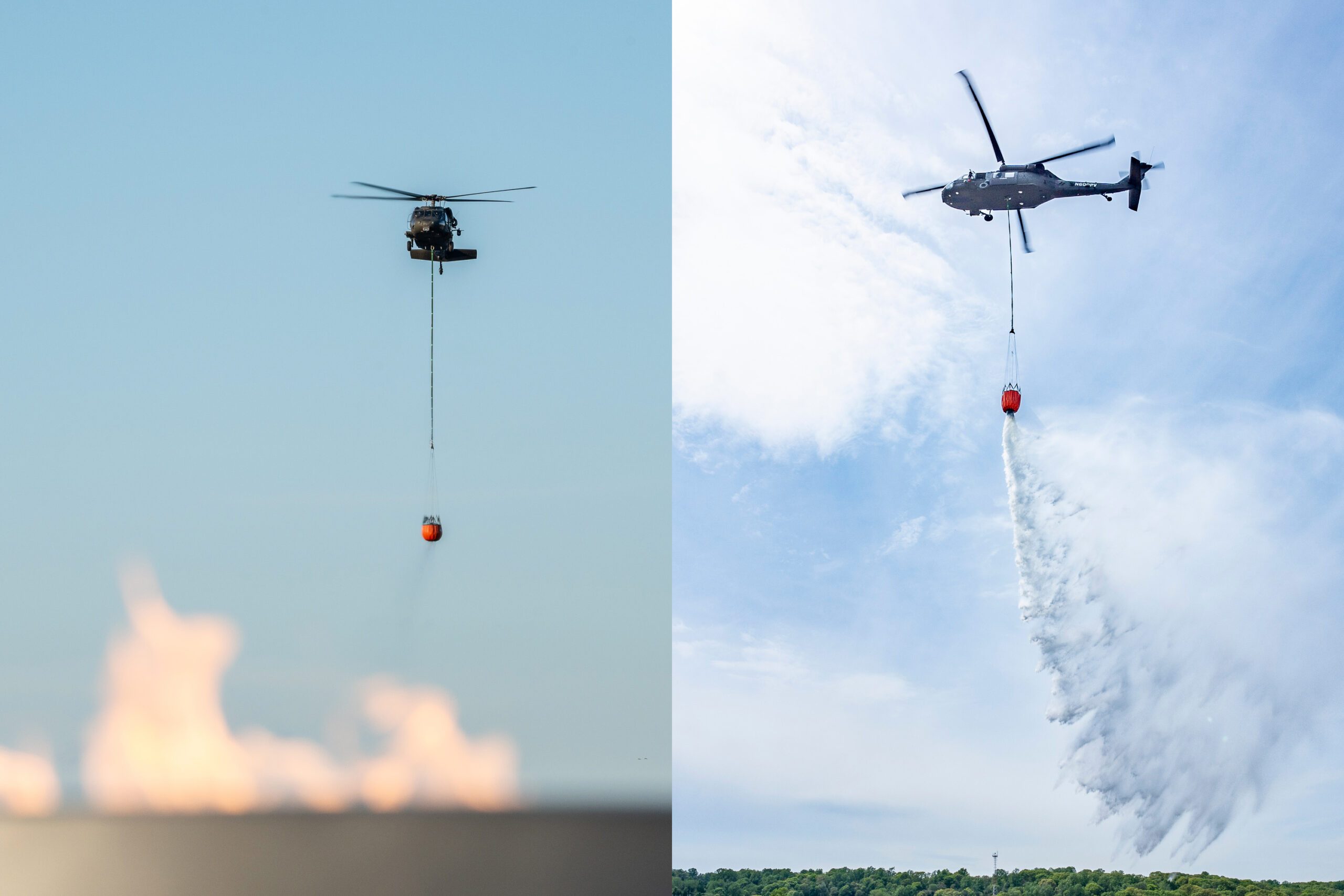Sikorsky and Rain Partner to Showcase Rapid Wildfire Response with Autonomous Flight Technology
In a groundbreaking demonstration on October 29, Sikorsky, a Lockheed Martin company, and Rain showcased the potential of autonomous flight technology to address wildfires. The event at Sikorsky’s Connecticut headquarters featured an autonomous Black Hawk® helicopter, equipped with Rain’s Wildfire Mission Autonomy System, executing precise water drops to suppress test fires. The demonstration highlighted the potential of autonomous aircraft to support firefighting teams in containing fires at their earliest stages.


Rapid Wildfire Response in Action
The demonstration showcased how an autonomous Black Hawk could be remotely commanded to launch, locate a fire, and suppress it with targeted water drops. In this case, the helicopter accurately dropped water over a controlled, propane-fueled fire ring, putting out flames only inches tall, but demonstrating precision in targeting and operation.
Maxwell Brodie, CEO of Rain, explained the broader context of the demonstration: “Government agencies, aerial firefighting operators, and investors are coming together to learn and see how both flight and mission autonomy can help prevent high intensity million-acre wildfires.” Brodie emphasized the increasing need for such technology, noting that “wildfires cost the United States over $390 billion annually, and multiple risk factors are set to grow up to 30% by 2030.”
The aircraft’s autonomous controls and water drops adjusted dynamically for real-time conditions, including an 8- to 10-knot crosswind, underscoring the adaptability of the Rain system to shifting environments. Sikorsky safety pilots were in the cockpit to monitor the process but did not intervene during the autonomous flight and water drop sequence, allowing observers to witness the full capability of the autonomous system.


Collaborative Efforts with Observers on Site
Representatives from key organizations, including NASA, the Federal Emergency Management Agency (FEMA), the Defense Advanced Research Projects Agency (DARPA), Los Angeles County Fire Department, and Orange County Fire Authority, attended the demonstration. Their presence emphasized the significance of exploring innovative technologies to tackle increasingly severe wildfire threats.
“Having worked closely together for over a year, our two companies are ready to demonstrate the joint capability in more dynamic conditions chosen by firefighters,” said Igor Cherepinsky, Sikorsky Innovations’ director of rapid development and prototyping. Cherepinsky noted that with Rain’s wildfire mission software, firefighters could deploy autonomous Black Hawk or Firehawk® helicopters in the field to prevent wildfires from spreading out of control.
Genevieve Biggs, director of the Wildfire Resilience Initiative at the Gordon and Betty Moore Foundation, praised the technology’s transformative potential: “This technology that we used to think of as being on the horizon is here now, no longer just a figment of our imagination. It’s humbling to see this impressive machine, and think about the improvement in safety that becomes possible when you’re layering into wildland firefighting an autonomous operation, as Rain and Sikorsky have been able to do together.”
Looking Forward
The successful demonstration marks a significant milestone in autonomous aerial firefighting. By integrating Rain’s mission autonomy system with Sikorsky’s MATRIX™ flight autonomy, this technology could allow firefighting teams to respond quickly and accurately to wildfires, especially in remote or hazardous areas where human crews face limitations.
As climate change and other factors increase the risk of severe wildfires, the development of autonomous systems may become an essential tool in protecting lives, property, and natural landscapes from devastation.
Want DRONELIFE news delivered to your inbox every weekday? Sign up here.
Read more:

